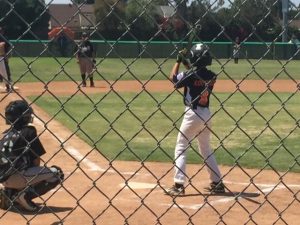I’m on a crusade to protect young catchers.
Willing and talented young catchers are in demand to manage pitchers, call defenses, handle balls in the dirt, and make a lot of throws
Most of this while being in the squat position with foul balls a common occupational hazard.
In fact, no player makes more total throws than a catcher.
OK, the majority of those are fairly easy tosses back to the pitcher.
However, there are those harder pick-offs or throws to catch steals.
Now, unlike pitchers who are replaced when tired, catchers tend to stay in play even for both ends of a doubleheader.
In addition, there are evidence-based pitch count limits and required rest days for baseball pitchers.
For catchers?
There isn’t as much other than Little League Baseball stating that any player who throws more than 41 pitches in a game cannot move to catcher in the same game.
In defense of young catchers, I’m going to step up with additional guidelines that can help protect their overall health and longevity.
1. Have catchers alternate standing and squatting with return tosses to the pitcher.
- While throwing from the squat is quicker and looks pretty cool, the lack of lower body involvement more stress on the shoulder.
- Coming out of the squat not only gets the legs involved in the throw but also reduces lower leg cramping.
2. Have catchers sit on a bucket for practice and bullpen sessions
- Allows a consistent target while putting less pressure on the knees and lower legs.
- The “knee saver” products are designed in theory to reduce the time spent with deep knee bent squats
3. Try to limit unnecessary throwing during practices or bullpen sessions.
- Let catchers roll balls back or drop them in a bucket.
- Less throwing means less overall stress and likely better throws when they matter.
4. Have a regular rotation of catchers.
- Watch for signs of fatigue, such as slower to come out of squat, weaker throws, or giving a lower target due to shoulder fatigue.
- Better to plan ahead with catcher substitutions rather than waiting for more obvious signs of fatigue.
5. Don’t just be a catcher, play multiple positions, especially when just starting out
- Learning a variety of positions makes for a better overall player
- Less pressure, especially on the knees
- Makes a future catcher more able to make defensive adjustments and calls
- First base often is a good choice:
- Limited throw demand, which then allows some armrest.
- Takes advantage of the fact that most catchers are taller and used to providing good targets.
6. On the other hand, limit the same game pitcher and catcher combinations
- Catching and pitching in the same baseball game may result in too many throws and increase the risk of injury.
7. Limit seasonal or annual arm overuse.
- The number one risk for arm injuries: year-round play.
8. Make sure the equipment fits.
- No helmet or mask can provide 100% protection against concussions, but those that fit well offer the best protection.
- Same thoughts for chest protectors and knee pads.
- Check and recheck the fit as kids grow or when sharing catchers of different sizes.




